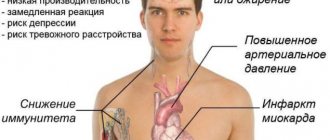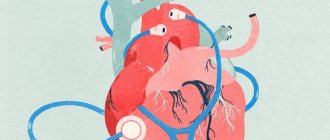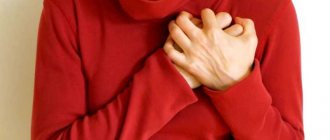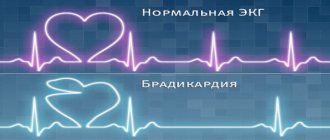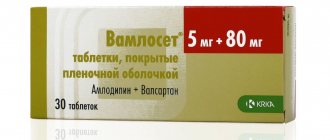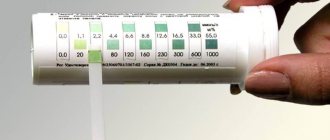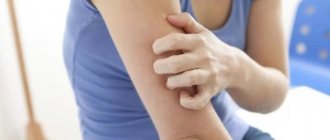Every person after physical activity feels a feeling of tightness in the chest, the frequency and depth of breathing increases. This condition in medical terminology is called shortness of breath (dyspnea). Its occurrence after any physical activity is considered a physiological norm. However, if the feeling appears at rest, it is necessary to find out the reason.
Shortness of breath is an alarming symptom in which the rhythm and frequency of breathing is disrupted, a feeling of tightness in the chest appears, and breaths become deeper and heavier. A symptom may indicate a number of diseases (for example, pathologies of the heart and blood vessels, pneumonia, asthma, tuberculosis).
Types of shortness of breath
In medicine, this problem has its own name - dyspnea. According to the international classification, the following types of shortness of breath are distinguished:
- bradypnea;
- tachypnea.
Bradypnea is a decrease in breathing with a slowdown in respiratory rate to 12 or less movements per minute. Tachypnea is an increase in shallow breathing with a frequency of more than 20 movements per minute.
Based on intensity and time interval, dyspnea is divided into types:
- chronic – observed for several years;
- acute – lasts from 2 minutes to several hours;
- subacute – from several hours to 2 days.
Most often, shortness of breath is observed in diseases of the respiratory (bronchopulmonary) and cardiovascular systems. These diseases are extremely life-threatening. Therefore, if you suspect shortness of breath, you should immediately consult a doctor to undergo examination and receive timely treatment.
Signs of manifestation of somatoform dysfunction
The main symptoms include various pain sensations, including:
- cardialgia (feelings of pain in the heart area);
- cephalalgia (headaches, neck pains);
- abdominalgia (discomfort, pain in the abdominal area).
The main symptoms include pain in the heart area
There are characteristic signs of vagotonia and sympathicotonia. In vagotonic people, there is increased sweating of the skin (i.e., hands and other parts of the body sweat), and their skin becomes greasy. In most cases, acne and pimples are present. Such people blush or turn pale easily. They have an excessive amount of subcutaneous fat, which is distributed unevenly throughout the body. Dermographism may develop. In this case, dermographism will manifest itself as redness and raised skin at the site of exposure, even after a light touch.
Sympathotonics have insufficient sweating. This causes the skin to become dry. Dermographism takes on a white or pink tint. Such people have a “thin”, asthenic or “normal” physique, but have an increased appetite.
Causes of shortness of breath
There can be quite a few reasons for shortness of breath. Among them:
- strong physical activity (sports, work);
- myocardial infarction, irregular heart rhythms, heart defects, myxomas, other heart problems;
- allergies, bronchial asthma, tuberculosis, emphysema, pneumothorax, pneumonia, pulmonary obstruction, cancer;
- vasculitis, primary type hypertension, aneurysm;
- myasthenia gravis, lateral sclerosis;
- ascites;
- uremia;
- anemia;
- pericardium;
- hyperventilation syndrome.
Endocrine diseases and shortness of breath
Often, breathing problems are an indirect symptom of thyroid dysfunction. With thyrotoxicosis - increased levels of thyroid hormones - metabolism accelerates, as a result of which all tissues and organs require more oxygen than before. The heart may not be able to cope with the increased load, resulting in compensatory shortness of breath.
Insufficiency of thyroid hormones, among other diseases, can cause excess weight. Fat deposition on internal organs, including the heart, can have an extremely negative impact on its functions.
Shortness of breath may also indicate that the patient has diabetes mellitus, in which vascular pathologies are common. The body tries to compensate for the lack of nutrition of organs and tissues, including their supply of oxygen, with the help of forced breathing. Developing diabetic nephropathy only worsens the situation, filling the blood with toxic metabolites.
Symptoms
Symptoms of shortness of breath can be very different, but they are always characterized by changes and disturbances in respiratory activity. A person can breathe very quickly and shallowly, or he can take rare and very deep breaths. In both situations, he experiences an acute lack of air, a feeling of suffocation and chest compression.
With inspiratory dyspnea, it is difficult for the patient to take a breath. At the same time, he hears noise while trying to draw oxygen into his lungs. In the case of expiratory dyspnea, it is difficult to exhale, as the lumens of the bronchioles and bronchi begin to narrow.
In medical practice, there are cases of mixed dyspnea, the condition of which is the most dangerous for the body. It can lead to complete respiratory arrest and death.
How to help an elderly person with shortness of breath in an emergency
Diseases associated with heart failure are life-threatening and it is necessary to be able to distinguish such conditions in order to provide timely help to the person.
Symptoms indicating that the lack of oxygen is associated with a problem with the heart:
- an elderly person has difficulty taking a breath;
- with any type of exertion, shortness of breath increases;
- shortness of breath appears in a lying position; in a sitting position, normal breathing is restored.
A person's lips turn blue, weakness and panic occur. Such symptoms are dangerous (pulmonary edema may occur) and require an immediate call to the ambulance.
Treatment of shortness of breath
Treatment for shortness of breath is selected depending on what root of the problem is discovered after diagnosis.
- If a foreign body is detected in the respiratory organs, surgical intervention is performed.
- For bronchial asthma, selective beta-agonists are used.
- For heart failure, diuretics, narcotic analgesics, and vasodilators are prescribed.
- If the cause is neurology, then the emphasis is on special breathing exercises.
- For obstructions, anxiolytics, respiratory support, oxygen administration and other measures are prescribed.
Causes of lack of air when speaking
DolojParazitov Medicine Not enough air when talking reasons
When you are out of breath after a run, this is quite normal. However, in cases where there is not enough air during a conversation
, you need to think about visiting a doctor. You may have serious health problems and it is better to identify them early.
With heart failure, it is difficult to breathe air. This sensation appears after light physical activity or eating. There is constant pain behind the sternum, breathing becomes hoarse. There may be frequent swelling of the extremities, and the hands and feet may be very cold.
The main reason for this situation is that the heart is not able to cope with normal load. The blood is insufficiently saturated with oxygen, and blood flow in the lungs and blood vessels slows down. If you experience similar symptoms, you should urgently consult a cardiologist. The doctor will most likely prescribe medications.
You should add more fatty sea fish, fruits and vegetables to your diet.
With angina pectoris, shortness of breath occurs during the slightest physical effort. This may happen while walking or after eating. It happens that even when talking there is not enough air. As the load increases, the attacks become stronger. Your chest starts to hurt and your throat feels like it’s constricting. You should immediately consult a doctor - angina attacks are extremely dangerous.
Difficulty breathing may appear after a person has had the flu or ARVI. In this case, shortness of breath increases while walking. There is a slightly elevated or normal body temperature and mild pain in the chest area. With such symptoms, a consultation with a pulmonologist, a clinical blood test and an x-ray of the lungs are necessary.
When a person suffers from bronchial asthma, breaths become short and a whistle is heard when exhaling. A deep breath is accompanied by involuntary contraction of the muscles of the back, shoulder girdle and abdomen. There is noticeable shortness of breath. You need to seek help from an allergist-immunologist and pulmonologist. The first will eliminate sensitivity to various allergens, and the second will study respiratory function.
Psychogenic shortness of breath often occurs after severe stress. At such moments, a person involuntarily breathes shallowly and quickly. This problem sometimes occurs as a consequence of traumatic brain injury. You can get rid of difficulty breathing by holding it for a while or switching your attention from the object of irritation.
:
Very often, not when stressful situations arise, I suddenly realize that my speech becomes intermittent and my breathing quickens. It is very difficult at such moments to control your body; the processes in it seem to occur without any regulation by consciousness.
Yes, I’ve already read it and even tested it on myself: long breathing according to the yoga method, with periodic delay after inhalation, helps a lot. They say it is useful to practice to prevent disease and generally improve the quality of life.
I am sure that Eastern philosophy and medicine are an inexhaustible source of wisdom, and knowledge of their fundamentals is the key to health and vitality for many years!
I also noticed difficulty breathing, as if my throat had narrowed. And after the run, shortness of breath also appeared. But I didn’t think that this could happen from a lack of oxygen. Although in my case this may be how allergies manifest themselves. You can't figure it out without doctors, you're right.
Inspiratory shortness of breath as a symptom of a number of diseases
Have you been struggling with HYPERTENSION for many years without success?
Head of the Institute: “You will be amazed at how easy it is to cure hypertension by taking it every day.
Dyspnea is a pathological condition when, for certain reasons, there is a lack of air. There are two main types - inspiratory dyspnea, when it is difficult for a person to take a breath, and expiratory (when it is impossible to exhale). In clinical practice, some diseases are accompanied by a mixed form.
Conditions characterized by inspiratory dyspnea
The following causes of inspiratory dyspnea are noted:
Our readers successfully use ReCardio to treat hypertension. Seeing how popular this product is, we decided to bring it to your attention. Read more here...
- Ingestion of a foreign body into the respiratory tract. In this case, breathing may be difficult. Accompanied by pain and cough. If the object is large in size, then suffocation occurs.
- Intoxication. In case of poisoning or toxic processes, shortness of breath and other symptoms appear depending on the type of toxic substance, and pulmonary edema may develop.
- Diaphragmatic paralysis. May be accompanied by inspiratory or other types of it. In addition, blueness of the fingertips, lips, and pale skin are noted.
- Shortness of breath can occur during pregnancy. Inhalation disturbance occurs due to pressure on the diaphragm from the enlarged uterus. Against the backdrop of the body's growing need for oxygen, such symptoms may gradually intensify. Anemia, which often accompanies pregnancy, also contributes to the deterioration of the condition.
- Pulmonary embolism. This is an acute condition characterized by sudden onset of shortness of breath, which worsens with physical activity, inhalation, bending or coughing. There is often bloody sputum, swelling of the lower extremities, pale skin, increased heart rate, and dizziness.
- Pneumothorax. It is observed when the layers of the pleura are damaged and air gets into the spaces. Requires urgent assistance.
- Myocardial infarction or angina attack. In this condition, inspiratory shortness of breath may occur, as well as acute chest pain radiating to the left arm, back or lower jaw.
- Diseases accompanied by pulmonary obstruction. In this case, shortness of breath on inhalation appears after exercise. Characteristic is a constant wet cough and frequent infection.
- Mountain sickness. Shortness of breath of varying intensity, lethargy, malaise, and general weakness occur when ascending to high altitudes due to a lack of oxygen in the air. With further deterioration, nosebleeds, severe headache, sleep and appetite disturbances may develop.
- Asthma. Inspiratory dyspnea in bronchial asthma is less common than expiratory dyspnea, develops at the height of the attack, and in rare cases it is observed constantly. This disease can be accompanied by any type of shortness of breath. The patient feels pressure in the chest, his breathing is wheezing, and can be heard without the use of a phonendoscope. Deterioration of the condition is observed at night, in the morning, after physical or psycho-emotional overload.
- Inspiratory dyspnea in young children often occurs as a result of an acute condition, and develops most often with diphtheria, swelling of the larynx during an allergic reaction. Immediately after birth, it may indicate congenital anomalies of the laryngeal structure, polyposis.
- Often, inspiratory dyspnea occurs as a result of neurological abnormalities. The complaints of such patients can be very colorful and varied. Such symptoms are observed in excitable individuals with low resistance to stress. The disease develops against a background of fear or depressed mood. Patients can even fake attacks of false asthma. The difference is that the patient often accompanies this state with groans, sighs, and other sound effects.
Normally, this type of shortness of breath can occur if a person engages in physical training at maximum loads. This is a normal phenomenon that does not require assistance and goes away with rest.
What should be done if the disease develops?
Since the disease is a sign of certain diseases, treatment of inspiratory dyspnea should consist of eliminating the cause of its occurrence.
Source: https://dolojparazitov.ru/medicina/ne-hvataet-vozduha-pri-razgovore-prichiny.html
Shortness of breath: cardiac and other types - why it appears, how to get rid of it and cure it
Have you been struggling with HYPERTENSION for many years without success?
Head of the Institute: “You will be amazed at how easy it is to cure hypertension by taking it every day.
The appearance of the patient can provide considerable information in terms of making a diagnosis. Shortness of breath, being a fairly noticeable symptom that is visible to the “naked eye,” often alerts the doctor to the suspicion that something is wrong with the lungs.
However, other diseases (cardiovascular pathology, diseases of the endocrine and nervous system, etc.) cannot be discounted.
), since dyspnea, as this disorder of respiratory function is also called, is characteristic of a very wide range of pathological conditions.
Shortness of breath shortness of breath - discord
Yes, indeed, the general name does not determine the identical nature of this disorder, therefore, clarifying the individual “symptoms” of shortness of breath in most cases helps to clarify its origin in the first stages of the search. Thus, the following types of shortness of breath have emerged in clinical practice:
Our readers successfully use ReCardio to treat hypertension. Seeing how popular this product is, we decided to bring it to your attention. Read more here...
- If respiratory distress is expressed in increased frequency, then we speak of tachypnea. This type is widely known and familiar to many due to the fact that it is a constant companion of febrile conditions in any infectious processes and hematological diseases. Frequent and deep breathing is referred to as hyperpnea and polypnea;
- Rare breathing movements are called bradypnea, which may indicate brain damage and hypoxia as a consequence of these lesions. Rare shallow breathing is called oligopnea;
- Apnea (cessation of breathing) can be detected by observing a sleeping person who has a change in the functional properties of the respiratory system due to various acquired diseases, mainly age-related (COPD - chronic obstructive pulmonary disease). This is why snoring is not considered so harmless, since it is the culprit behind apnea in the first place. People suffering from heart disease do not tolerate a strictly horizontal position well; after some time after falling asleep, they experience orthopnea (a lying position leads to difficulty inhaling), so many prefer to sleep half-sitting on high pillows.
A factor such as difficulty inhaling or exhaling underlies the division of dyspnea into:
- Inspiratory dyspnea, characterized by difficulty breathing. It is characteristic of heart failure (cardiac dyspnea) and lesions of the respiratory system (upper respiratory tract, trachea, large bronchi, pleura, diaphragm) and indicates their poor patency, which can be caused by:
- bronchospasm,
- swelling of the mucous membrane of the respiratory tract,
- foreign body
- accumulation of pathological secretion,
- developmental anomalies,
- tumors compressing the airways,
- abscesses, etc.
- Expiratory shortness of breath, indicating obstacles that impede the passage of small bronchi and are caused by bronchospasm caused by narrowing of the bronchioles, accumulation of secretions in them and swelling of the mucous membrane. Expiratory shortness of breath accompanies diseases such as bronchial asthma, bronchiolitis;
- The mixed type of shortness of breath is a characteristic sign of parenchymal acute respiratory failure (ARF).
Obviously, the most common cause of shortness of breath is bronchopulmonary pathology, ranging from childhood laryngospasm to acute respiratory failure and pulmonary edema. Of course, this list will also include other diseases (bronchitis, bronchial asthma, pneumosclerosis) leading to COPD and, accordingly, chronic respiratory failure.
Source: https://ogomeopatii.ru/ne-hvataet-vozduha-pri-razgovore-prichiny/
Preventing shortness of breath
Since shortness of breath is not an independent disease, but only a symptom, you must first take care of your heart and lungs. For this purpose, the following are recommended as preventive measures:
- stop smoking and drinking alcohol;
- monitor the daily routine (ensure a balance of work and rest, sound, standardized sleep);
- exclude heavy, fatty foods, fast food, carbonated and alcoholic drinks;
- reduce excessive physical activity;
- protect your nervous system from stress and anxiety.
What is VNS
The ANS is responsible for the functioning of internal organs, external and internal glands, as well as blood and lymph vessels. There are parasympathetic and sympathetic types of the nervous system. The components of the parasympathetic system are located in the sacral spinal cord, midbrain and medulla oblongata. The spinal cord contains parts of the sympathetic nervous system.
The ANS is responsible for the functioning of internal organs, external and internal glands, blood and lymph vessels
How does it affect the body's functioning?
Under the influence of the parasympathetic nervous system, the following changes occur in a person:
Under the influence of the parasympathetic nervous system, the following changes occur in a person
- the pupil narrows;
- salivation increases;
- the bronchi narrow, ventilation of the lungs is inhibited;
- HR (heart rate) decreases, as well as their strength;
- increased appetite and bile production;
- narrowing of the bladder;
- peristalsis (wave-like contractions) of the rectum intensifies.
The sympathetic nervous system has the opposite effect:
The sympathetic nervous system has the opposite effect
- the pupil dilates;
- salivation is inhibited (suppressed);
- the bronchi dilate, breathing quickens;
- heart rate increases, as well as their strength;
- stimulates the release of epinephrine (adrenaline) by the adrenal cortex;
- digestion processes are inhibited, appetite decreases;
- the bladder expands;
- rectal peristalsis is inhibited.
FAQ
Which doctor should you contact if you notice signs of shortness of breath?
First of all, you need to make an appointment with a therapist. He will issue directions for primary tests and diagnostic studies. Based on the results obtained, it will become clear which specialist to refer the patient to. Most often, further treatment is carried out by cardiologists, pulmonologists and neurologists.
Can pregnant women experience shortness of breath? Is it dangerous for the fetus and mother?
Shortness of breath during pregnancy is observed quite often. This is due to constriction of the lungs by the diaphragm. The fetus is constantly growing, the load on the heart and lungs increases. Therefore, shortness of breath should not be considered a danger in this case. The normal respiratory rate in pregnant women is 22-24.
When should you see a doctor and which one?
If you have shortness of breath, you need to visit a GP. If necessary, he will schedule consultations with more specialized specialists - a cardiologist, pulmonologist, hematologist, rheumatologist, allergist-immunologist, phthisiatrician, neurologist, oncologist, endocrinologist, infectious disease specialist.
They will pay attention to a number of additional signs to distinguish one disease from another:
- whether increased breathing is associated with physical activity or appears even at rest;
- does dyspnea occur suddenly if you take a horizontal position;
- are there additional sensations such as fear of death, chronic fatigue;
- Is shortness of breath accompanied by increased blood pressure, blue lips, cough, swelling, pain when urinating.
Additional examinations are prescribed:
- ECG, Holter monitoring, ultrasound, x-ray, coronagraphy, scintigraphy;
- tests for biochemistry, coagulogram, general urine test, etc.
This is still far from a complete list.
